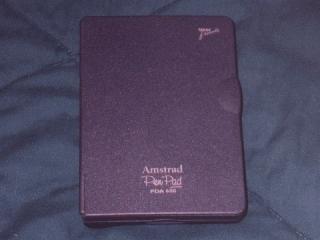
With the cover closed
|
|
||||||||||||||||||||||||||||||||||||||||||||||||||||||||||||||||||||||||||||||||||||||||||||||||||||||||||||||||
| Resources |
|
It's pocketbook size is further emphasized by the book-like cover that protects the screen. The case is somewhat rubberized, and has a nice shape and feel to it. The pen is stored in a slot in the rear.
The top edge hold the "Mini-Serial" connector, complete with sliding cover. The bottom edge is where you'll find the single Type I PCMCIA slot.
When I got mine, it refused to work -- upon turning it on, the screen displayed the PenPad logo faintly, and refused to recognize any pen input. Luckily, however, a kind reader wrote with the fix: remove all the batteries and let it sit overnight. I did that and it came back to life! It's a pretty cool machine after all.

With the cover closed
|
|
||||||||||||||||||||||||||||||||||||||||||||||||||||||||||||||||||||||||||||||||||||||||||||||||||||||||||||||||
| Uncle Roger's Classic Computers |
|---|
| Computers - Wanted - Add Info - Conduct - Awards - Resources |